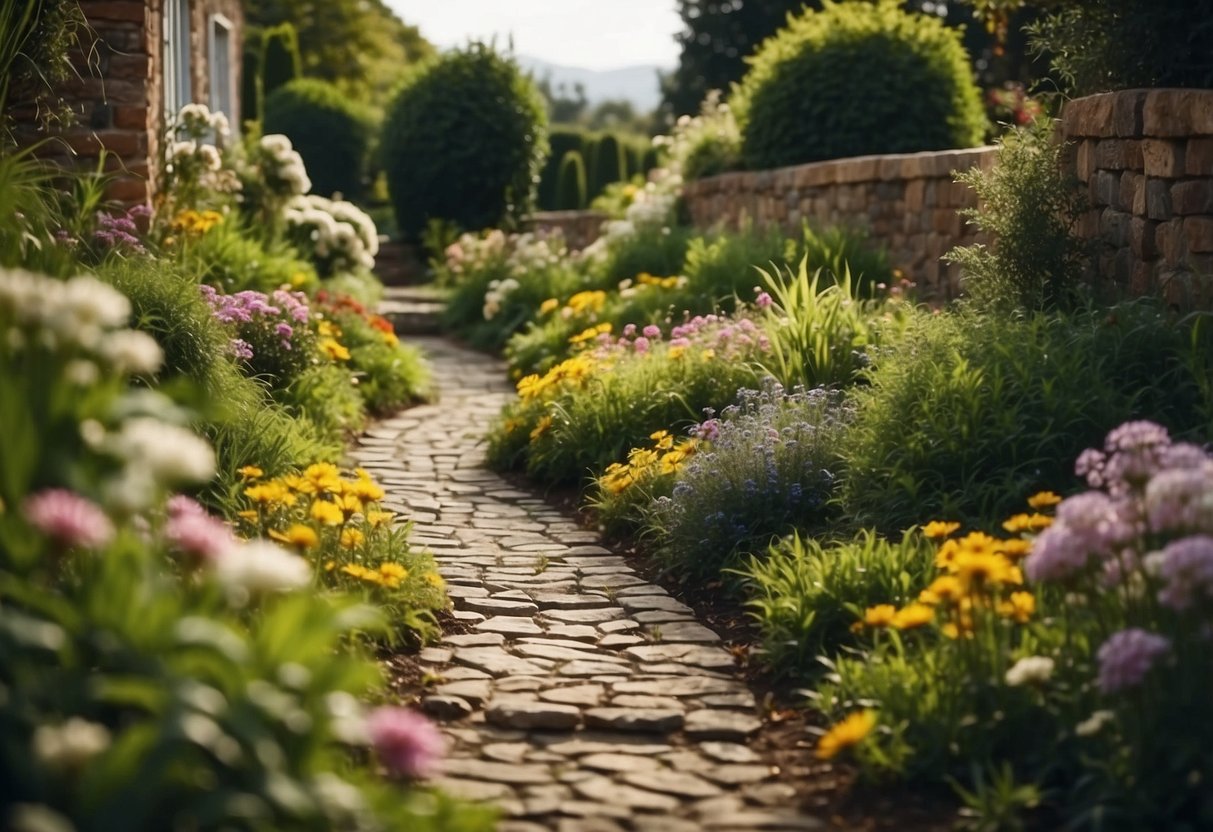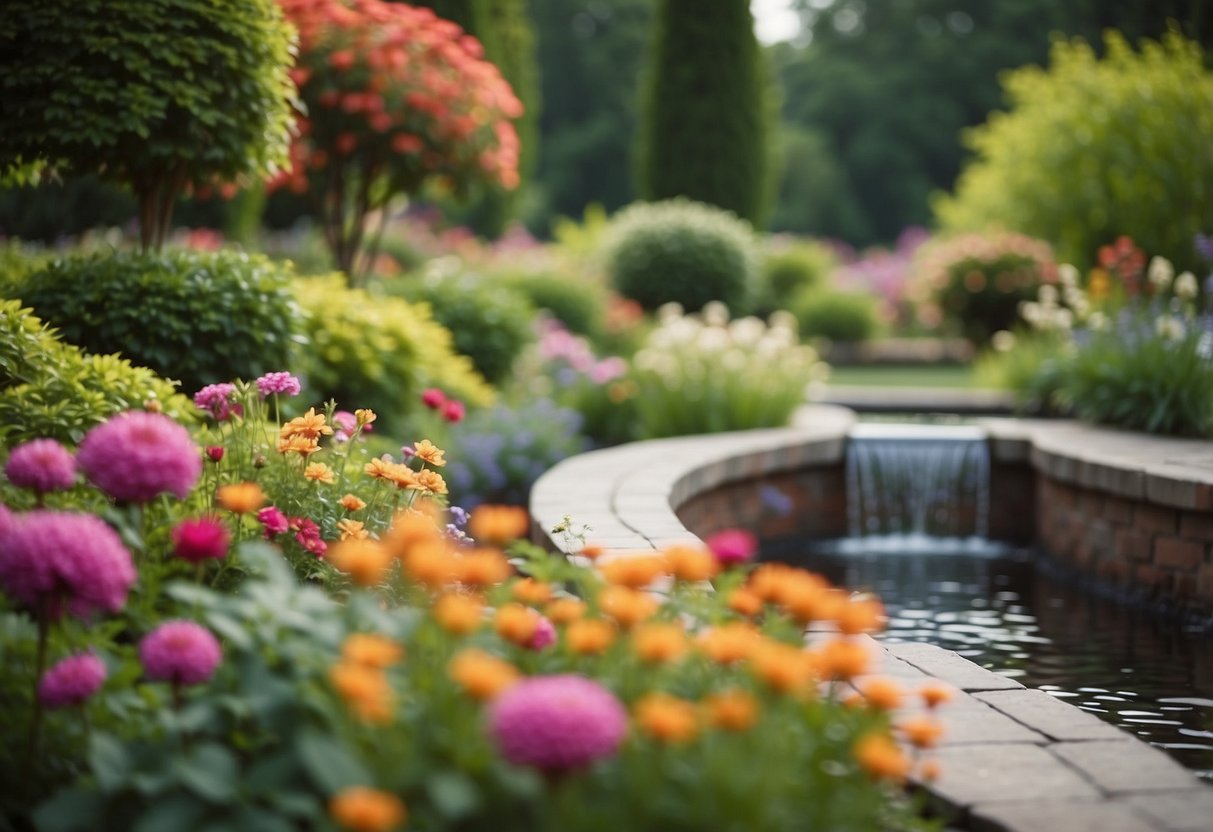Long Narrow Garden Ideas: Transform Your Space with Creativity
Creating a beautiful long narrow garden can be a rewarding challenge for any gardener. Whether you’re dealing with limited space or trying to make the most of an awkward layout, there are many creative solutions that can transform your garden into a stunning outdoor space. By thinking outside the box and utilizing various design techniques, you can turn a narrow plot into a lush and inviting area.

You might wonder how to add depth, interest, and functionality to such a restricted space. From maximizing privacy to choosing the right plants and structures, many strategies can help you achieve your garden goals. This guide will offer practical tips and creative ideas to inspire you in making your narrow garden a beautiful and enjoyable retreat.
1) Vertical Planters

Vertical planters are perfect for making the most of a long, narrow garden.
By adding planters to a wall or fence, you can maximize your gardening space. This not only saves ground space but also adds visual interest.
You can create a DIY vertical garden using materials like wood slats to hold your planters. This is a simple and fun project that can brighten up any narrow area in your garden.
Consider vertical planters for herbs, flowers, or even small vegetables. They are versatile and can be tailored to fit your garden’s style.
2) Climbing Roses

Climbing roses are perfect for narrow gardens. They grow vertically, saving space. You can plant them along fences or trellises.
Choose varieties like ‘Kiss Me Kate’ for their beautiful pink flowers and pleasant scent. These roses can grow 8 to 10 feet tall and thrive in sun to part shade conditions.
To get the best blooms, make sure to feed your roses twice a year, in spring and summer. Pruning once a year during winter will help keep them healthy. Climbing roses can also pair well with clematis, creating a beautiful and fragrant display.
3) Narrow Water Features

Adding water features to your garden can make a big difference. A long and narrow pond, for instance, fills up a lengthy space attractively. Surround the pond with plants to enhance the look.
A small fountain or bubbling rock can fit nicely too. These features bring movement and soothing sounds to your garden. You can also use a tall, slim water wall for a sleek, vertical element.
A thin stream or rill flowing along the garden path adds a touch of elegance. It doesn’t take much space but provides a lovely, calming presence.
4) Raised Garden Beds

Raised garden beds are perfect for long, narrow gardens. They help you make the most of your space by providing defined areas for planting.
You can build them out of wood, stone, or metal. Just pick what suits your style.
Raised beds also ease the strain on your back since you don’t have to bend down too far to tend to your plants. This lets you enjoy gardening more comfortably.
Consider planting veggies, flowers, or even small shrubs in raised beds to create a beautiful and productive garden space. For more ideas, check out these raised garden bed designs.
5) Trellis with Clematis

Using a trellis with clematis can transform your long narrow garden. Clematis vines are known for their vibrant flowers and ability to climb.
A wooden trellis or lattice can provide excellent support. The natural look of wood blends well with the garden’s environment.
You can also consider a wrought iron trellis for a more durable option. It adds a touch of elegance to your garden space.
6) Hanging Baskets

Hanging baskets can add height and visual interest to your long, narrow garden.
You can use lush, trailing plants to overflow the baskets and create a stunning display. For example, plants like calibrachoa, verbena, and snapdragons bloom beautifully in full sun and provide vibrant colors.
Try placing hanging baskets at varying heights to add depth and texture to your space. This will help break up the long, narrow shape and make your garden look more inviting.
Consider integrating different types of plants like ferns and vines to fill shady areas with greenery.
7) Bamboo Screens

Bamboo screens are perfect for adding privacy to a long, narrow garden. They can grow quickly and fill up space with lush greenery.
You can plant bamboo in a tall planter for a sleek look or directly in the ground for a natural feel. Either way, they create a green wall that offers both privacy and beauty. Some varieties, like the Multiplex Hedge Bamboo, are even suitable for containers and can tolerate colder temperatures.
For more information, you can check out the 15 best bamboo plants for screening and privacy.
8) Compact Pergolas

Compact pergolas are perfect for long, narrow gardens. They add structure and a cozy feel without taking up too much space. You can find designs that fit any style, from modern to rustic.
An A-frame pergola is a great choice. Its sloped roofline suits small patios beautifully. For more ideas, you can explore these small patio pergola ideas.
Using these pergolas, you can create a relaxing spot for reading or dining outdoors in your narrow garden. Add some fairy lights, and you have a charming evening retreat.
9) Garden Mirrors

Garden mirrors can make your narrow garden feel more spacious.
You can place a mirror on a fence or wall to reflect light and add depth. This trick works well for shaded areas, giving them a brighter look.
If you have a potting bench, consider propping up a mirror there. It can enhance the space while being functional.
Adding a mirror in your garden isn’t just about looks. It also helps direct more sunlight to your plants. This can be especially useful in narrow gardens with limited light.
Explore different shapes and sizes to find what suits your style. Mirrors are flexible, stylish, and practical.
10) Slim Pathways

Slim pathways are perfect for leading you through a long, narrow garden. They help guide the eye and create a cozy, intimate feel.
Use materials like gravel or stepping stones to make these pathways look natural. Add edging plants or small flowers alongside for a charming touch.
You can also incorporate curved paths to give a sense of depth and interest. This simple trick makes your garden feel more expansive and inviting.
Design Principles for Long Narrow Gardens

When working with long narrow gardens, it’s crucial to create a sense of depth and intrigue. You can achieve this by adding focal points, utilizing vertical spaces, and thoughtfully planning pathways.
Creating a Focal Point
Having a focal point in your garden draws the eye and breaks up the length. This can be a statue, water feature, or a large, unique plant. Place your focal point at a cozy seating area or at the end of the garden to give your space a clear destination.
Use color and texture to emphasize your focal point. Contrast vibrant flowers with lush greenery to make the area pop. Ensure the focal point is visible from various angles to maintain interest.
Using Vertical Space
Vertical gardening maximizes space. Install trellises for climbing plants, like roses or ivy. Walls or fences can be adorned with hanging planters or living walls. This not only saves ground space but adds layers to your garden.
Incorporate tall plants or trees along the edges. They add height without taking up too much horizontal space. You might try vertical supports for vegetables, trailing foliage, or even tiered planting for a lush, overflowing effect.
Integrating Pathways
Avoid a straight path that emphasizes the narrow shape. Instead, create winding or stepping stone pathways that meander through different areas of the garden. This layout breaks the linearity and makes the garden feel broader.
Use contrasting materials for the path. Combine gravel with stepping stones or wood for texture and interest. Incorporate garden beds alongside the pathway to soften the edges and lead the eye through different sections of the garden.
You might add seating areas or small patios at pathway junctions to create cozy spots for relaxation and transition. By integrating engaging paths, you ensure each part of your garden feels connected and inviting.
Plant Selection Tips

When creating a long, narrow garden, focus on choosing appropriate plants and layering them effectively. This helps to maximize your space and enhance the visual appeal.
Choosing Suitable Plants
For a narrow garden, select plants that suit the space and environment. Opt for slim and tall plants to add height without taking up much room. Examples include bamboo and tall grasses like Miscanthus.
Climbing plants like ivy or wisteria can grow vertically, saving space on the ground. To add seasonal color, consider tulips and daffodils in the spring, and asters or chrysanthemums in the fall.
Low-maintenance plants can be a lifesaver. Hardy perennials that can thrive in your climate require less care. Also, remember to consider the light and soil conditions of your garden when selecting plants.
Layering Plants
Layering plants creates depth and visual interest in your garden. Start with taller plants at the back. Use medium-sized shrubs in the middle and lower-growing plants at the front.
Climbing vines on a trellis can add vertical layers. Place bushy shrubs like lavender or rosemary in the middle to provide volume. At the front, use groundcovers such as creeping thyme or sedum.
Incorporating various textures and colors also enhances the layering effect. Mix different leaf shapes and bloom colors to achieve a rich, layered look. This approach not only maximizes space but also makes your garden visually compelling.







